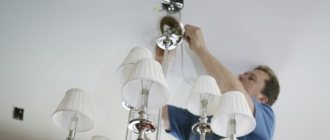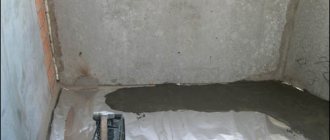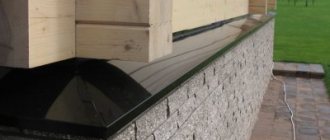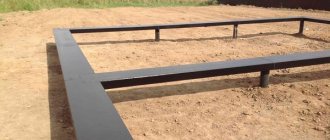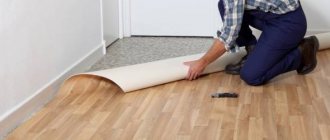A chandelier is a favorite and main lighting fixture in most apartments. The varieties and varied designs make it universal, suitable for any style and size of room. Installing a chandelier is a rather complicated process that is best left to specialists. If you are “your own master,” then we hope our article will help you understand the basic principles and details of this operation.
Types of chandelier mounting
As we know, there are two types of chandeliers - ceiling and pendant. They differ in appearance and in the method of attachment. A pendant chandelier is more difficult to install. There are only three mounting methods:
- using a hook;
- mounting on a bar;
- mounting on a bracket.
A chandelier will delight you with its light and decorate the room only if it is securely fastened and connected correctly. Therefore, we devoted this article to practical issues of installing and connecting a chandelier, and we will try to understand the technology of each method.
Basic methods
First, let's figure out what options there are for installation on the ceiling. Today there are two types of fasteners:
- Hook - used for old-style chandeliers, as well as very heavy lamps
- A mounting strip or bracket is a modern fastener that is used for light chandeliers and lamps
The specified types of fastening involve working with a concrete slab. Therefore, you cannot do without special tools. Next - details on how to attach a chandelier using the above methods.
Features of mounting a chandelier on a hook
Depending on the weight of the chandelier, different types of fasteners are selected. The hook is considered the simplest and most reliable option. It is always screwed into a solid base - concrete or wood. The choice of fastening also depends on the type of ceiling covering. The following types of hooks exist:
- Anchor - a hole is drilled for it, in which it is fixed by surprise. Mainly used for concrete ceilings.
- Through - even at the stage of building a house, the hook is installed through the ceiling and securely fastened.
- Mortgage – fixed in a concrete slab if there are voids there.
- Simple hook with thread, self-tapping screw.
The type, type and size of the mount depend on the weight of the lighting fixture. Typically, installation parameters are indicated on the packaging of the chandelier. However, the hook is usually not included in the kit, which means you need to purchase it yourself. And here there are certain rules:
- If the weight of the chandelier does not exceed 4 kilograms, then installation can be carried out using a regular threaded hook. To do this, just drill a hole in the ceiling, place a plastic dowel in the channel, and then screw in the hook as deeply and tightly as possible.
- If the weight of the lamp exceeds 4 kg, then an anchor option will be required. Such a hook is a whole structure consisting of a spacer sleeve, which, in fact, ensures reliable installation by expanding in the drilled hole; threads and nuts, which ensures the convenience of screwing the thread. When screwed in, the spacer sleeve expands and is securely fixed in the concrete base.
After installing the hook, electrical power is supplied to it. The main advantages of such fastening:
- The most reliable method allows you to attach the chandelier to a suspended ceiling. Special high-strength hooks can withstand very massive models.
- It is possible to change the lighting device if it is out of order, or you have started repairs - there can be a lot of reasons. Just remove it from the hook. When attaching to the bar, you will have to unscrew a lot of things.
The main drawback is that this option is not suitable for low ceilings.
Advantages of suspended ceilings and their disadvantages
Let's dwell a little on what caused such popularity. With their help, you can radically transform the design of the room, while appreciating their following advantages:
- reliably hide foundation unevenness, which is especially important for old buildings;
- easy to install;
- any communications can be laid between the ceiling structure and the base;
- the resulting coating is easy to maintain, durable, and resistant to temperature fluctuations;
- provide additional noise and heat insulation of the room.
Before attaching the ceiling, you should consider the following features:
- requires careful handling;
- visually reduces the space of the room;
- does not tolerate changes in humidity and increased dampness in the room.
Attaching the chandelier to the bar
The mounting strip is included with the chandelier. Special plates that are fixed to the ceiling with self-tapping screws come in three varieties:
- For small devices, conventional longitudinal ones are used.
- Cross-shaped - if the weight of the chandelier is significant.
- For the heaviest and most massive ones, I-beams are used.
Sequence of installation operations:
- First, mark with a pencil the intended location for attaching the chandelier.
- Use a drill or hammer drill to make holes for fastening.
- We insert plastic dowels into the holes.
- The plank is applied in such a way that the holes on it coincide with the dowels, then we screw the plank.
- We fix the chandelier on the bar, connect the wires.
- Tighten all existing nuts.
You won’t be able to do this alone, since you have to hold the chandelier and connect the wires at the same time. This method is often used when installing on a suspended ceiling.
Useful tips from experts
To create high-quality indoor lighting and avoid installation errors, it is worth studying the recommendations of electricians:
- The location where the lamp will be located should be determined during the renovation work. This way you can route the wiring to the desired area, and you won’t have to extend the cable if it’s not long enough.
- Before installation, it is advisable to remove lampshades and other decorative elements from the device: the weight of the chandelier will decrease, it will be easier to work, and fragile parts will not be damaged.
- Be sure to study the information in the technical data sheet of the device - it indicates the weight, type of chandelier mounting, and other useful information.
- All work must be carried out after turning off the electricity supply.
Choosing a suitable chandelier mount and installing the lamp yourself is a completely feasible task. The main thing is to approach the process competently, study the recommendations of the lighting device manufacturer in the data sheet and take into account the type of ceiling. It is very important to follow safety precautions when connecting wires.
Did you manage to solve your problem using the recommendations from the article?
Yes!
46.21%
No. More answers required. I'll ask in the comments now.
38.35%
Partially. There are still questions. I'll write in the comments now.
15.45%
Voted: 751
Mounting a chandelier on a bracket
The chandelier is mounted on the bracket using the same technology as on the bar. You will just have to drill more holes, since the bracket consists of several crossed strips. It is required when the chandelier is very massive and heavy. The bracket is also included in the package. In this case, several holes are made in the ceiling, so careful preliminary marking is necessary. Installation consists of two stages: securely attaching the bracket to the ceiling and attaching the chandelier itself.
Selection of bars for wooden sheathing
To create the ceiling sheathing, you will first need wooden blocks. In this case, you can choose any type of wood. The main thing is that the material itself is dry (humidity should not exceed 18-20%).
The size of the bars is selected based on the formed size of the inter-ceiling space, since the design of the suspended ceiling provides the possibility of laying heat-insulating boards or laying communications. But, as a rule, to create a wooden sheathing it is enough to use slats with a cross-section from 20*40 to 80*40 mm. Although you can choose any other size, the main thing is that the height of all bars is the same.
How to attach a chandelier?
During installation, it is necessary that the lighting device is not only securely fastened, but also does not damage the ceiling covering. The fasteners included with the chandelier will not always be suitable for your ceiling. Therefore, we analyze it in detail.
- Wooden ceiling - this is the easiest place to strengthen a chandelier. We mark the surface, make holes, screw a bar or hook (you can use a self-tapping hook with a thread), connect power and hang the lighting fixture.
- Concrete ceiling - this will require some work. We choose an anchor hook for this purpose - it, as a rule, is not included in the chandelier package. We fix it in the ceiling, as described above, that is, we drill a hole so that the hook fits into it as tightly as possible - choose the correct diameter of the drill, and the depth of the hole exactly matches the length of the hook. When drilling, to prevent dust from flying into your eyes, craftsmen advise putting a plastic or paper cup over the drill. We connect the wires and carefully place them inside the decorative bowl. We check the strength by hanging a load heavier than the chandelier.
- Stretch ceiling - fixed either with a hook or on a strip. All preliminary work is carried out before installation of the structure. A hole is made for the hook, a chain for the chandelier is attached to it, and the cut hole is covered with a bowl. When mounting on a bar, the algorithm is slightly different. The strip is fixed on a wooden base - bars equal to or exceeding the width of the strip, so that it does not overlap or pinch suitable wires. Then they install the suspended ceiling and mark the place where the strip is fixed, glue a special plastic ring in the center, cut a hole inside, take out the wires and attach it to the lamp.
- Plasterboard (suspended) ceiling. It is located at some distance from the ceiling and installation of the lamp has its own characteristics and difficulties. The most desirable method of fastening is on a hook. To do this, mark the location of the lighting fixture on the ceiling, where an anchor hook is inserted, around which the frame is mounted, leaving a hole for the hook. The ceiling chandelier is attached using a strip, to which a timber base is created. The bar is fixed to the base, and then the lamp is attached to it.
Preparing the wiring
Before starting work, it is necessary to determine which wires belong to zero, phase and ground. To do this, it is recommended to use a special tool for “dialing”
During the connection, it is important not to confuse the neutral and phase wires with each other. Otherwise the chandelier will give an electric shock
De-energize the room
Having determined the type of wires, you need to completely de-energize the room. It is prohibited to begin installing the chandelier while the current is on.
Cabling
If the chandelier is mounted away from the place where the wiring runs, it is necessary to stretch the cables under the suspended ceiling to the installation point of the lamp.
Corrugation
Often when laying cables, corrugated cables are used, which are secured to the sub-ceiling using dowels. You can also use plastic ties or boxes for this. When laying through corrugation, it is recommended to leave at least 30 centimeters of cable on each side.
Extension if necessary
Cable extension is carried out using terminal blocks, to which already laid and new wires are supplied on each side.
Safety precautions at work
Of course, we deliberately omit purely technical terms here to make things easier to understand. For more detailed instructions on installing a chandelier, we address you to professionals, and we will now touch on safety issues that must be observed when performing electrical work.
- Just turning off the lights is not enough; turn off the power to the apartment by turning the circuit breakers on the distribution panel to the “off” position. If you have an old electric meter and no panel, then simply remove the plugs.
- Check the wiring, and it is better if a specialist does it.
- Make sure there is no voltage on the wires using an indicator device. It has either phase or zero. If there is voltage, the device will show the phase.
- Connect the wires using terminals or blocks. Simple twisting is extremely unreliable.
- Choose only high quality consumables, both your safety and the reliability of the system depend on it.
- All installation tools must be in good working order.
- If you are installing lamps in a damp room (bathroom), then be especially careful.
- Copper and aluminum wires cannot be twisted together - only using terminal blocks with separate clamps for each wire.
- Do not neglect grounding, although this will complicate the work.
And most importantly: do not touch the wires without disconnecting them from the network.
Connecting electrical wiring
Connecting the chandelier to the electrical network is an important step when installing a ceiling lamp. First of all, you need to determine the types of cables on the ceiling. There can be 2 or 3 of them, most often they differ in color:
- blue – zero;
- red, brown or black – phase;
- green-yellow – grounding.
If the marking is missing or there are doubts about its correctness, do this:
- turn on electricity in the room;
- an indicator screwdriver is applied sequentially to the bare end of each cable - when contacting the zero, the indicator does not light up, but when contacting the phase, it lights up.
From each lampshade of the chandelier there are 2 marked wires (zero, phase). They need to be collected into 2 groups according to type, twisted, and both of these twists should be connected to those on the ceiling. Connect them using terminals.
Installation instructions for the chandelier
We are armed with knowledge about the types of fastening of chandeliers, about how to install them on different types of ceilings, is it time to get to work? We will need:
- Stepladder - how else to do work under the ceiling. Don't have a stepladder? You can get by with a table, but only if the ceiling does not exceed 2.5 meters. Of course, the table must be reliable and strong.
- An electric drill or hammer drill, but they must be powered by a battery, not from the mains - you will turn off the electricity.
- A screwdriver, also battery powered.
- Several different screwdrivers, flat and Phillips, an indicator screwdriver for checking the voltage in the wires.
- A device for measuring electrical voltage, called a multimeter.
- A knife for stripping wires must be sharp.
- Soldering iron and solder.
All consumables and mounting tools are usually included with the chandelier. And you will probably need an assistant to carry tools when you are near the ceiling and hold the chandelier.
And finally, a few more very important recommendations:
- Make all connections and connections in strict accordance with the diagram specified in the instructions for the electrical device.
- Wrap the exposed parts of the wires in several layers of electrical tape.
- Do not use random supports when working: no boxes or crates, this is very dangerous. Only a reliable stepladder with a latitude limiter.
- All tools must be in good working order and not slip out of your hands.
- When drilling holes, be sure to ensure that no wiring is running through there. Use a sound locator for this.
- Pay attention to the switches; if they are not connected correctly, you may get an electric shock when connected.
Hanging a chandelier yourself is difficult, but it is possible. The main thing is to approach this issue responsibly and seriously. Follow the strict sequence of work and follow the instructions. Electrical work is associated with increased danger. Wear goggles over your eyes and rubber gloves on your hands.
Specifications
A hanger for a drywall profile has certain characteristics, based on which you can plan the size of the structure, as well as other details. For example, the height of a direct suspension is 75mm or 125mm. Based on this parameter, you can know in advance what the maximum distance from the wall to the drywall can be. This is necessary to properly plan the layout of communication systems and make heat or sound insulation.
Direct hanger for drywall and its dimensions
Do not be afraid that the mount will not support the weight of the frame with drywall. Although an ordinary sheet weighs more than 20 kg, and the frame does not make it lighter, the hangers are not afraid of such a load.
- straight – 40 kg;
- vibration suspension – 56 kg (there are specimens that can withstand no more than 12 kg);
- sliding – 25 kg;
- vernier – 40 kg;
- anchor – 25 kg.
Why wood
Any home craftsman will confirm that most often during repairs or construction it is necessary to connect timber and concrete together. For example, to the foundation when building a wooden house or when installing joists for a future floor, as well as performing work on cladding walls and ceilings. Everywhere we have to solve the same problem - how to more reliably attach wood to concrete.
Fastening the cable channel to a concrete wall using dowels
How to attach timber to the foundation
When constructing a log house or frame house, the issue of reliable connection of the crown beam with the concrete base is the main one, since the stability of the entire structure will depend on its positive solution.
Types of anchor bolts
Anchor bolt with nut
It has four main parts: a pin with a thickening in the form of a wedge spacer, a metal sleeve (anchor), a washer and a nut. During fastening, the nut, by screwing it onto the stud, wedges the bushing, unclamping it at the installation site and pushing its edges apart. The anchor bolt fits tightly into the hole and it is no longer possible to remove it without damaging the attachment point. As you understand, the wall or ceiling material must be quite hard and dense. Typically, such bolts are used in concrete, natural stone and solid brick. This is the standard specimen among its species. We'll talk about exceptions later.
Devices for hanging lamps
After the hook for hanging the chandelier is installed, you will need to raise the lighting device to the ceiling and connect the electrical wires at a height. Such work requires the simultaneous performance of two actions:
- reliable fixation of the lamp on the ceiling;
- wiring installation.
Therefore, the master does not have enough hands and an assistant is needed. To frequently perform such work, you can make a simple device consisting of:
- a hook for hanging a chandelier from the ceiling fastenings;
- cable made of dielectric material;
- a tip with a rotating mechanism inserted into the hole of the lamp.
The principle of its operation is illustrated with pictures.
The swivel mount works on the same principle as the fisherman's kukan. It is inserted into any hole on the body, and the chandelier hangs freely on a cable. The master has his hands free and can connect the wiring. When the rotating mechanism is disengaged, the hook is removed and a lamp is hung in its place.
This device makes installation easier. It is made for constant, same type of work. But, when a single installation of a chandelier is performed, it can simply be tied with a strong cord.
